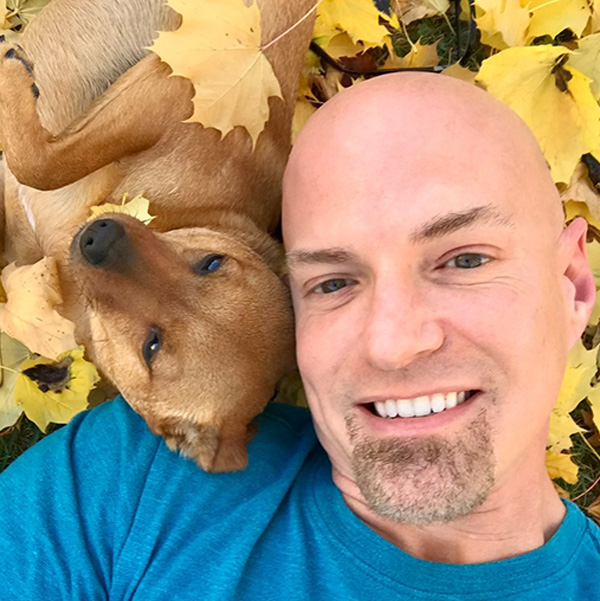Glossary of Terms
At Stand with Trans we are commited to defining who we are and how to address all members of the LGBTQ+ and Trans Community.
Words Matter!
AFAB/AMAB
- Acronyms meaning “assigned female/male at birth” (also designated female/male at birth or female/male assigned at birth). No one, whether cis or trans, gets to choose what sex they’re assigned at birth. This term is preferred to “biological male/female”, “male/female bodied”, “natal male/female”, and “born male/female”, which are defamatory and inaccurate.
Agender
- An umbrella term encompassing many different genders of people who commonly do not have a gender and/or have a gender that they describe as neutral. Many agender people are trans. As a new and quickly-evolving term, it is best you ask how someone defines agender for themselves.
Ally
- A person who is not LGBTQIA+ but shows support for LGBTQIA+ people and promotes equality in a variety of ways.
Biological Sex
- The classification of a person as male or female. At birth, infants are assigned a sex, usually based on the appearance of their external anatomy. (This is what is written on the birth certificate.) A person’s sex, however, is actually a combination of bodily characteristics including: chromosomes, hormones, internal and external reproductive organs, and secondary sex characteristics.
Boi
- A term used within the queer communities of color to refer to sexual orientation, gender, and/or aesthetic among people assigned female at birth. Boi often designates queer women who present with masculinity (although, this depends on location and usage). This term originated in women of color communities.
Butch
- An identity or presentation that leans towards masculinity. Butch can be an adjective (she’s a butch woman), a verb (he went home to “butch up”), or a noun (they identify as a butch). Although commonly associated with masculine queer/lesbian women, it’s used by many to describe a distinct gender identity and/or expression, and does not necessarily imply that one also identifies as a woman or not.
Cisgender (Cis)
- A term used to describe a person whose gender identity aligns with those typically associated with the sex assigned to them at birth.
FTM: Female to Male
-
Generally refers to someone who was identified female at birth but who identifies and portrays his gender as male. People will often use this term after taking some steps to express their gender as male, or after medically transitioning. Some, but not all, transmen make physical changes through hormones or surgery.
Some people will refer to themselves as men of transgender experience.
Some transmen do not use FTM (female-to-male) to describe themselves because they don’t think of themselves as having transitioned from female to male.
Some people prefer to be referred to as men rather than transmen or transgender men.
Alternate terms: affirmed male, FTM, gender-affirmed male, man.
Femme
-
An identity or presentation that leans towards femininity. Femme can be an adjective (he’s a femme boy), a verb (she feels better when she “femmes up”), or a noun (they’re a femme). Although commonly associated with feminine lesbian/queer women, it’s used by many to describe a distinct gender identity and/or expression, and does not necessarily imply that one also identifies as a woman or not.
Gender
Gender is more complex than most of us have been taught. Gender is made up of three parts:
- Gender biology (our bodies or biological sex — our sex assigned at birth based on the appearance of genitals)
- Gender expression (how we dress and act)
- Gender identity (how we feel inside)
For most kids, these three facets of gender line up and the kids are typically gendered boys or girls (cisgender). For other kids, however, these three facets of gender align differently; these kids are gender-expansive, which includes transgender kids.
Source: www.genderspectrum.org
Gender Affirming Surgery
Umbrella term for various sugeries an individual may undergo to align the physical appearance with one’s true identity.
Gender Dysphoria
Clinically significant distress caused when a person’s assigned birth gender is not the same as the one with which they identify. According to the American Psychiatric Association’s Diagnostic and Statistical Manual of Mental Disorders (DSM), the term – which replaces Gender Identity Disorder – “is intended to better characterize the experiences of affected children, adolescents, and adults.”
Gender Expansive
- Conveys a wider, more flexible range of gender identity and/or expression than typically associated with the binary gender system.
Gender Expression
- External appearance of one’s gender identity, usually expressed through behavior, clothing, haircut or voice, and which may or may not conform to socially defined behaviors and characteristics typically associated with being either masculine or feminine
Gender Fluid
- According to the Oxford English Dictionary, a person who does not identify with a single fixed gender; of or relating to a person having or expressing a fluid or unfixed gender identity. A changing or “fluid” identity.
Gender Identity
A person’s internal, deeply held sense of their gender. For transgender people, their own internal gender identity does not match the sex they were assigned at birth. Most people have a gender identity of man or woman (or boy or girl). For some people, their gender identity does not fit neatly into one of those two choices (see non-binary and/or genderqueer below.) Unlike gender expression (see below) gender identity is not visible to others.Source: https://www.glaad.org/reference/transgender
Gender Non-Conforming/Non-Binary
-
People whose gender expression is (1) neither masculine nor feminine or (2) different from traditional or stereotypic expectations of how a man or woman should appear or behave.
Gender Transition
The process by which some people strive to more closely align their internal knowledge of gender with its outward appearance. Some people socially transition, whereby they might begin dressing, using names and pronouns and/or be socially recognized as another gender. Others undergo physical transitions in which they modify their bodies through medical interventions.
Genderqueer
-
This term is generally used in two ways: (1) as an umbrella term that includes all people whose gender varies from the traditional norm, akin to the use of the word “queer” to refer to people whose sexual orientation is not heterosexual only; or (2) to describe a subset of individuals who are born anatomically female or male, but feel their gender identity is neither female or male.
Intersex
-
Describing a person with a less common combination of hormones, chromosomes, and anatomy that are used to assign sex at birth. There are many examples such as Klinefelter Syndrome, Androgen Insensitivity Syndrome, and Congenital Adrenal Hyperplasia. Parents and medical professionals usually coercively assign intersex infants a sex and have, in the past, been medically permitted to perform surgical operations to conform the infant’s genitalia to that assignment. This practice has become increasingly controversial as intersex adults speak out against the practice. The term intersex is not interchangeable with or a synonym for transgender (although some intersex people do identify as transgender).
LGBTQQIAPP+
-
A collection of identities short for lesbian, gay, bisexual, trans, queer, questioning, intersex, asexual, aromantic, pansexual, polysexual (sometimes abbreviated to LGBT or LGBTQ+). Sometimes this acronym is replaced with “queer.” Note that “ally” is not included in this acronym.
MTF: Male to Female
-
Generally refers to someone who was identified male at birth but who identifies and portrays her gender as female. People will often use this term after taking some steps to express their gender as female, or after medically transitioning. Some, but not all, transwomen make physical changes through hormones or surgery.
Some people will refer to themselves as women of transgender experience.
Some transwomen do not use MTF (male-to-female) to describe themselves because they don’t think of themselves as having transitioned from male to female.
Some people prefer to be referred to as women rather than transwomen or transgender women.
Alternate terms: affirmed female, gender-affirmed female, MTF, woman.
Non-Binary
-
Preferred umbrella term for all genders other than female/male or woman/man, used as an adjective (e.g. Jesse is a nonbinary person). Not all nonbinary people identify as trans and not all trans people identify as nonbinary. Sometimes (and increasingly), nonbinary can be used to describe the aesthetic/presentation/expression of a cisgender or transgender person.
Passing/Blending/Assimilating
-
Being perceived by others as a particular identity/gender or cisgender regardless how the individual in question identifies, e.g. passing as straight, passing as a cis woman, passing as a youth. This term has become controversial as “passing” can imply that one is not genuinely what they are
passing as.
Queer
-
General term for gender and sexual minorities who are not cisgender and/or heterosexual. There is a lot of overlap between queer and trans identities, but not all queer people are trans and not all trans people are queer. The word queer is still sometimes used as a hateful slur, so although it has mostly been reclaimed, be careful with its use.
Sex Orientation
-
A person’s physical, romantic, emotional, aesthetic, and/or other form of attraction to others. In Western cultures, gender identity and sexual orientation are not the same. Trans people can be straight, bisexual, lesbian, gay, asexual, pansexual, queer, etc. just like anyone else. For example, a trans woman who is exclusively attracted to other women would often identify as lesbian.
"T"
-
Short for testosterone. Often used when describing hormone replacement therapy.
Top Surgery
-
Chest surgery such as double mastectomy, breast augmentation, or periareolar (keyhole) surgeries.
Trans
-
Prefix or adjective used as an abbreviation of transgender, derived from the Latin word meaning “across from” or “on the other side of.”
Trans Woman/Trans Man
Trans woman generally describes someone assigned male at birth who identifies as a woman. This individual may or may not actively identify as trans. It is grammatically and definitionally correct to include a space between trans and woman. The same concept applies to trans men. Often it is good just to use woman or man.
Sometimes trans women identify as male-to-female (also MTF, M2F, or trans feminine) and sometimes trans men identify as female-to-male (also FTM, F2M, or trans masculine). Please ask before identifying someone. Use the term and pronouns preferred by the individual.
Transgender
- An umbrella term for people whose gender identity and/or gender expression differs from what is typically associated with the sex they were assigned at birth. People under the transgender umbrella may describe themselves using one or more of a wide variety of terms – including transgender. Some of those terms are defined below. Use the descriptive term preferred by the person. Many transgender people are prescribed hormones by their doctors to bring their bodies into alignment with their gender identity. Some undergo surgery as well. But not all transgender people can or will take those steps, and a transgender identity is not dependent upon physical appearance or medical procedures.
Conversely, cisgender – or cis – is the term used to describe people whose gender identity or expression aligns with those typically associated with the sex assigned to them at birth.
Transition
- A person’s process of developing and assuming a gender expression to match their gender identity. Transition can include: coming out to one’s family, friends, and/or co-workers; changing one’s name and/or sex on legal documents; hormone therapy; and possibly (though not always) some form of surgery. It’s best not to assume how one transitions as it is different for everyone.
Our Group Facilitators!
Meet a few of our Stand with Trans support group facilitators!

Michael Chaney, PhD
Counselor

Amy Ver Wey, MA, LLP, RPT
Counselor

Melissa Hill
Counselor
From Our Youth
Mailing Address
23332 Farmington Rd #84
Farmington, MI 48336
Call
248.907.4853
